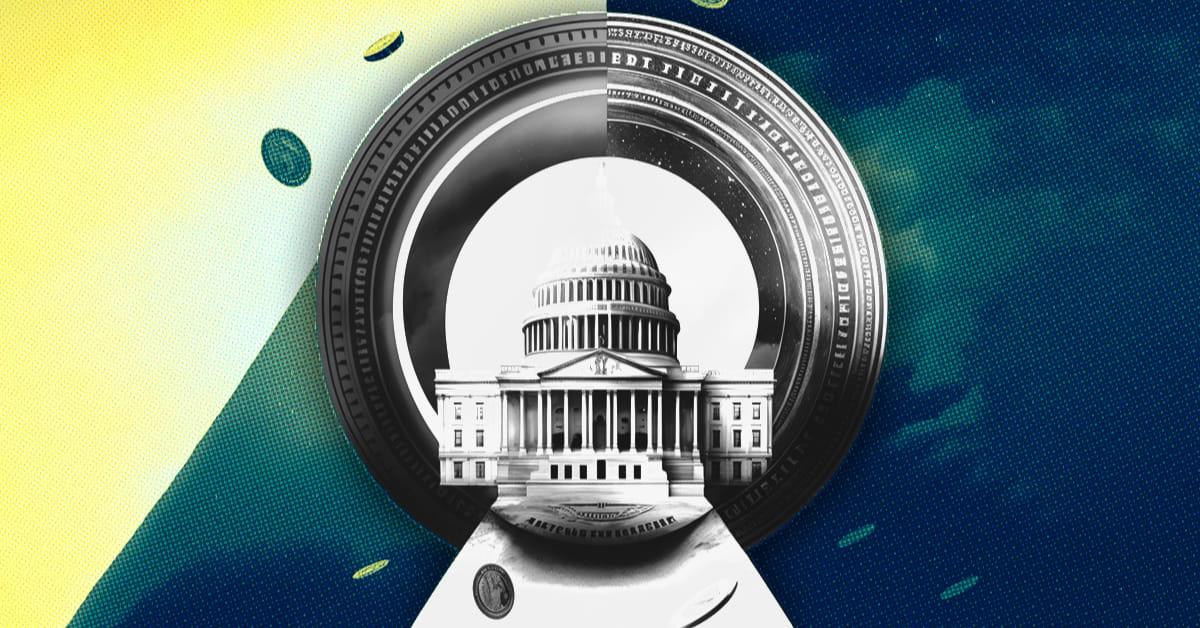

Fact one: The United States government has been trying to push dollarization for well over 100 years. Fact two: Digital currencies are a straight, efficient path to victory for dollarization.
So why are “kosher” stablecoins under attack? (Kosher = 1:1 backed stablecoins, by our definition).
Various agencies within the U.S. government are trying to cap legitimate, regulated, U.S. dollar stablecoin projects at the knees.
Something does not compute.
I have a long history with stablecoins, so let me provide some color about what’s going on and why this is so important.
TLDR: We need safe stablecoins. We need great founders who have weathered the crypto hype cycle to see what stablecoins can do, and build the infrastructure it takes to get there. And we need regulators to recognize the importance of stablecoins — and stop working against them.
The Need For Digital Dollars
When I arrived at Facebook in 2017 after working at Medium and Andreessen Horowitz, Facebook didn’t yet have an initiative—let alone a point of view—on crypto. I strongly believed that blockchain, not yet “web3,” was here to stay and likely to transform the future, and therefore Facebook should at least have a perspective on it.
At the time, Facebook’s mission was to “give people the power to build community and bring the world closer together.” Facebook had done that from a social perspective, but the world was still financially fragmented.
Transactions are forms of communication. Yet we didn’t (and still don’t) have a way to move value freely across borders, at the speed of the internet, with the ease of a text message, in a safe, low-cost, censorship-resistant way.
We needed (and still need) a safe alternative to some fiat currencies, along with ways to store that value. The answer we first came up with at Facebook was a “stablecoin” though we didn’t have a consensus term for it back then. This idea ultimately turned into Libra.
What woke me up every morning while leading Libra (later named Diem) was this:
1. First, that the future of money will be more digital than it is physical.
2. That the dominance of the U.S. dollar as the world’s reserve currency is great for the United States (and beyond).
3. And that if the U.S. government does not recognize this, someone else will. (Hello China).
At Libra, we tried to build something that would add positive value to millions and millions of people’s lives. The scope of the project evolved, but became knotted up by U.S. regulator’s needs, wants, and demands.
It got to the point where the regulators were becoming the product managers. To an extent, that could have been okay, if it allowed everyone to deliver a product that we knew was both wanted and needed.
Ultimately, we didn’t get there. Libra was the right idea, but the wrong time and place. There are maybe only two topics that unite both sides of the aisle: fear of China and hate of Facebook. As an American, I hoped that fear of China would supersede hate of Facebook. It did not.
Still, I was confident in the demand and need for digital dollars, enough to believe that there would be a product that would come to market in a more bottoms-up way.
Here’s the big picture. Today, the total market cap of stablecoins is around $135 billion. The lion’s share of that belongs to the USD: >90% of that market cap represents stablecoins backed by USD or USD equivalents.
This is great for the dollar. In the stablecoin world, the U.S. dollar is not poised to lose its dominant position. Unless the U.S. actively relinquishes it.
If you zoom in closer, this means opportunity. Relative to web2 standards, you can argue that digital dollars are the only use case in crypto with any significant product-market fit.
So what’s going wrong?
The Pizza Test: Stablecoins As Dollars
Let’s take a quick look at definitions and the pizza test, in order to unravel the absurdity of the attack on stablecoins.
A stablecoin is a digital asset that maintains value relative to a traditional asset. Many stablecoins, for example, are digital representations of the U.S. dollar.
There are two ways stablecoins maintain their stability. They are either 1) pegged to a commodity or currency, or 2) have an algorithmically-regulated supply.
Though oversimplifying, there are also two broad buckets that these coins fall into: 1) store of value, an asset that serves to preserve wealth by maintaining or gaining value over time, and 2) medium of exchange, or an asset used as a mode to buy/sell/trade goods.
These two categories are not mutually exclusive, and their classification is relative. For example, the U.S. dollar is both a store of value as well as a medium of exchange.
You are happy storing some savings in U.S. dollars in your bank account, confident that they won’t rapidly depreciate. You are also happy buying a slice of pizza with USD, confident they won’t rapidly appreciate.
Bitcoin is not a good store of value relative to the U.S. dollar over the past 24 months, but it is a great store of value relative to the Turkish lira, which has rapidly lost value amid wild inflation over the past 24 years. And even relative to the dollar over the past 10 years. Bitcoin, however, has never been a good medium of exchange.
If Bitcoin is the gold you keep under your mattress to either preserve value or generate wealth over years, then a stablecoin is something that you can confidently use to buy a pizza. Or a train ticket. Or a house.
And a very popular “flavor” of stablecoins is the digital U.S. dollar. Stablecoins can be used in the same way you use dollars: as a means of exchange, to store or transform value, or as a hedge against fluctuations in the landscape of more volatile assets.
Barriers And Limits
So to tie it together: one of the only crypto use-cases that has truly taken off, at any significant scale, is dollars. People still want and need U.S. dollars.
Not surprisingly, we’ve seen stablecoins gain ground in emerging markets like Kenya, Turkey, Argentina, and Senegal, where many people want access to USD – a currency that is widely used, stable, reliable, and more inflation-resistant than the currencies of many developing nations. The only problem? Many people can’t access physical dollars. You can’t just go to an ATM in Kenya and take out whatever you want–whether dollars or local currency. There are various reasons for this, including currency controls and limits on international transfers, but the net result is the same: Your money doesn’t work for you.
But with a dollar-denominated stablecoin, theoretically, those barriers and limits do not exist. Anyone, anywhere in the world, can have access to money that will preserve their wealth.
This stands counter to many currencies that can lose 20-30% per month or more if you don’t spend or invest it in anything. Take inflation in Venezuela, for example, which uses the Bolivar; the country experienced an inflation rate of 65,000% in 2018 and just this year finally exited “hyperinflation” mode (or 50% month-over-month inflation). Access to stablecoins in countries like Venezuela is safeguarding livelihoods and providing economic stability for many.
So what’s the catch? Well, several, but broadly speaking:
The first category is the stablecoin design. Since there are different schools of thought for how stablecoins should be designed to, well, maintain stability, there is still a liability for users who need to do their homework. Not all digital assets with “USD” in them are created equally.
The second category is usability. In theory, digital dollars are the holy grail. In reality, as I learned at Libra, it’s not that simple. You still need connectivity to traditional money–like ways to get value into and out of the system. You still need safe places to store these assets, like secure digital wallets. You still need applications and services to accept these forms of payment.
To make this vision a reality, broadly, we’re going to need solutions to the above and more.
The U.S. Needs Safe Stablecoins
Safe stablecoins may sound redundant, but it’s not.
In theory, stablecoins sound “safe.” In practice, assets can be self-branded as stablecoins, but are not actually safe–in that, for example, there is no reserve backing the supply. This will require some consensus around the definition of what a stablecoin is–something that is currently being batted around Congress.
Some of these arguments are thoughtful, others miss the point. Financial regulators are busy asking if stablecoins are a security. USD-backed stablecoins are not securities. First and foremost, no one expects a profit from holding them — they’re called “stable”coins for a reason (i.e., their value remains constant, at least for the kosher ones). The Howey Test defines securities as the “investment of money in a common enterprise with a reasonable expectation of profits to be derived from the efforts of others.” How are kosher/safe stablecoins remotely close to meeting the legal threshold for a security?
Further, other of our governing parties need to recognize what stablecoins can mean for U.S. foreign policy or even national defense: a way to cement the position of the U.S. dollar as currency becomes digitized.
Five years ago, when we at Libra were speaking to U.S. regulators about stablecoins, they were lost. Meanwhile, the CCP’s digital currency team was in the thousands. Fast forward to today, the U.S. regulators still seem lost at best, and misguided at worst. And who knows where China’s digital currency efforts are.
What we do know is that the Ministry of Foreign Affairs of the People’s Republic of China just published a report on “US Hegemony and Its Perils.” In this report, there is a section on “Economic Hegemony.” What they describe as a “weapon” (the U.S. dollar) is an incredibly powerful tool. China has world reserve currency envy, and they’re coming for it.
I don’t know who we have to shake or how hard. I’ve tried. This isn’t a question of crypto, it is a question of democracy.
Do you want to live in a world that’s denominated in RMB?
Stablecoins Need You, Too
We see opportunities here to build great and literally world-changing businesses. We’re going to need tools and applications to introduce and proliferate the use of stablecoins into the economy.
Maybe it starts with a company that helps workers get their paychecks in stablecoins, and that’s how users first access them. Or a peer-to-peer marketplace that allows any user with an internet connection to buy and sell goods with stablecoins directly.
The potential is there and we have the capacity, and the need, to build toward it.
As Founders ourselves, we respect your time. That’s why we built BriefLink, a new software tool that minimizes the upfront time of getting the VC meeting. Simply tell us about your company in 9 easy questions, and you’ll hear from us if it’s a fit.
